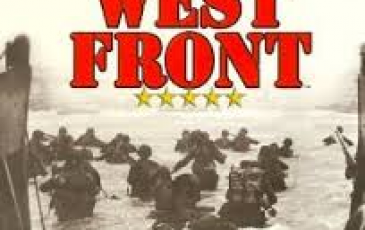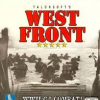| Rating: |
8.13 (3) |
| Games Played: |
5 |
| SM: |
10 |
| Turns: |
50 |
| Type: |
Custom |
| First Side: |
Allies |
| Second Side: |
Axis |
| Downloads: |
569 |
Of all the troops involved in the D-Day landings, the men of the Canadian Army , with raw memories of the disaster suffered by Canadian forces in 1942 at Dieppe, might have had greatest cause for apprehension. The Canadian 3rd Infantry Division, (Maj-Gen R.F.L. Keller) supported by the 2nd Canadian Armoured Brigade, formed part of I Corps (Lieutenant-General J.T. Crocker), whose D-Day objective was to secure Caen and push 11 miles inland to seize Carpiquet airfield. The presence of rocks offshore meant that the tide would not be high enough for the landings to begin until half an hour later than those elsewhere, and so probably facing an alerted enemy. The main immediate opposition would come from three, fairly low grade, battalions of the 716th Division, but of more concern was the possibility that 21st Panzer Division, believed to be south-east of Caen, might intervene quickly with a Counter-attack in direction Douvres-Luc sur Mer. The Canadian landing would take place on JUNO beach, on either side of the mouth of the River Seulles. In the event, rough sea conditions delayed the landings further for between ten minutes and half an hour, so that the landing craft had to run the gauntlet of several hundred yards of heavily mined beach obstacles. Fortunately few craft were hit during the approach, but heavy losses were suffered as they withdrew. Confusion was worsened when most of the Canadian infantry hit the beach ahead of the amphibious armour which had been intended to land ahead of them. Equally concerning, the bad visibility had caused the main weight of the preliminary bombardment to overshoot, leaving the defences both intact and manned by an alerted enemy.The 7th Canadian Brigade hit the defences at the mouth of the Seuiles, near the town of Courseulles. They were supported by DD tanks which had been launched from 800 yards from offshore, but engineer units did not arrive until half an hour later. In the meantime the infantry and DD tanks succeeded in dealing with enemy coastal strong points, but the late arrival of the engineers led to considerable delay in clearing exits from the beach. As a result, although forward units from the Royal Winnipeg Rifles and Regina Rifles were able to push fairly quickly about two miles inland, support troops became caught up in considerable congestion at the beach exits, slowing down the impetus of the advance. Further east the 8th Canadian Brigade had been forced by rough sea conditions to land without the support of DD tanks. As a result they encountered some sharp resistance around Bernieres. The leading elements of the first wave of assault troops, from the Queen's Own Rifles, encountered heavy fire from German strong points as they crossed 100 yards of open beach from their landing craft, and suffered quite heavy casualties. However by the time supporting troops from the French-Canadian Regiment de la Chaudiere began to land 15 minutes later, immediate resistance, apart from scattered sniper fire, had been overcome, and by 9-30 am, the town of Bernieres was firmly in Canadian hands. At a cost of about 1,000 casualties, the Canadians were safely ashore, and linked up with the British units which had landed on their right at "Gold" beach. On the Canadian left, however, a potentially highly dangerous gap remained between them and the British landings on "Sword" beach.
































